12th, April 2019 | Oh Jinna
Understand Your Contact Lens Prescription

Do you want to understand your contact lens prescription?
If you have corrective eyeglasses or contact lenses, a doctor has most likely checked your eyes and has given you a prescription for your lenses. Have you ever seen your prescription and wondered if you could somehow learn to understand your contact lens prescription?
Your prescription isn’t just a note to authorize your lenses, it actually contains distinct details to assure that your lenses are secure and appropriate for your eyes.
With that said, you should never buy contact lenses without a prescription.
Eye doctors use standardized medical terms, measurements, and abbreviations to write your prescription.
So, as confusing and complicated as you prescription might look, there’s actually an easy way to understand what they mean.
Fun fact, in some states, the law requires your eye doctor to give you a copy of your lens prescription immediately after your checkup.
Keep this in mind and don’t forget to ask your eye doctor for a copy of your prescription.
Understand Your Contact Lens Prescription
It’s finally time for you to understand your contact lens prescription. The different parts and section of your prescription contains the specific details for your lenses.
Now, let’s have a look at these parts and find out what they really mean.
Expiration Date

The first part of the prescription that you should be aware of is the expiration date.
Typically, contact lenses last for about a year or two depending on your prescription.
You could have a shorter expiration date if your doctor thinks that you’re eyes need to be checked frequently for tolerance and prescription adjustments.
OD and OS
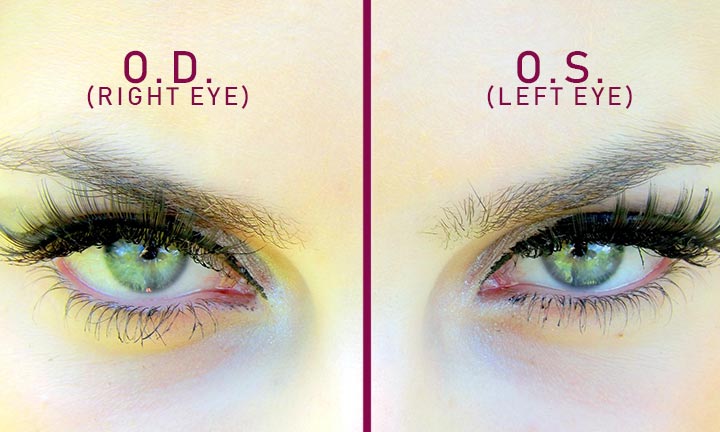
OD or oculus dexter is simply the latin terminology for your right eye. While, OS or oculus sinister means left eye.
This part of the prescription basically shows you the specific measurements of your left and right eye.
Sometimes, you might see OU in your prescription. This means oculus uterque or each eye and is basically the same measurements for both your eyes
PWR or Refractive Power

This segment shows the the amount of correction the lens needs to have in order to sharpen the distance of your vision to the desired level, which is usually 20/20.
You need more correction when the number in this segment is farther from zero.
If you see a minus sign, it means that the prescription is for nearsightedness or myopia. While, a plus sign means a correction for farsightedness or hyperopia.
BC or Base Curve
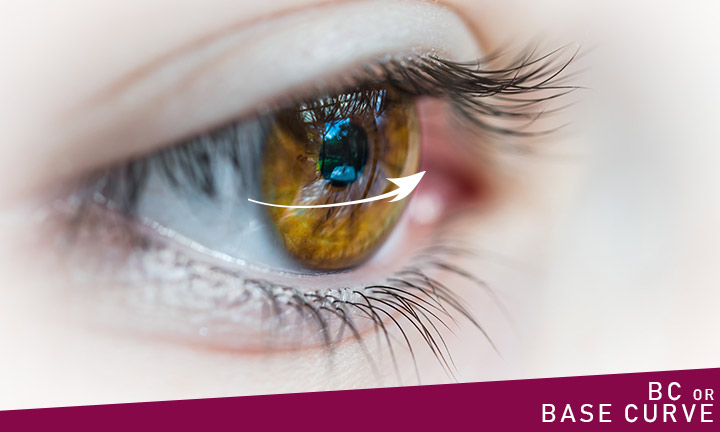
The base curve is the measurement of your eye’s back curvature. Doctors measure your curve by millimeters.
A more accurate measurement of the curvature of your cornea means a better fit for your eyes. You have an especially steep cornea if the number in this section is very low.
DIA or Diameter
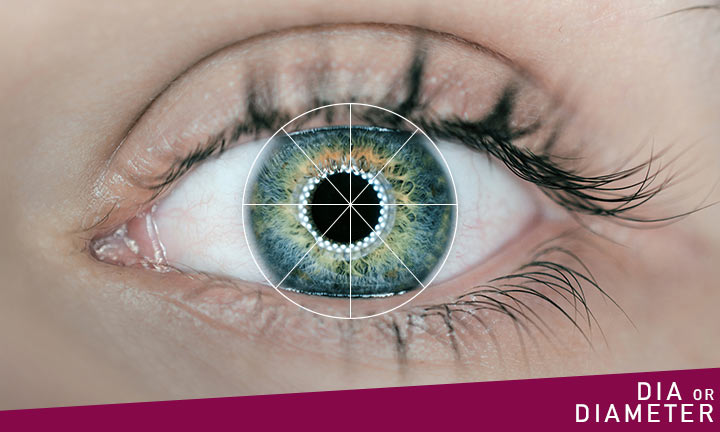
The diameter is the measurement of the distance between the opposite edges of your contact lens. This diameter of in your prescription determines where the edge of the contact lens sits on your eye.
The accuracy of your diameter is very important because your lenses may cause irritation or abrasions if this measurement is inaccurate.
CYL or Cylinder
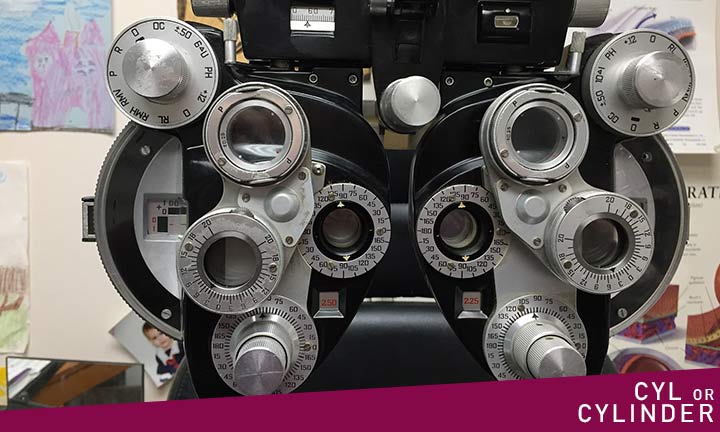
You’ll find a cylinder value if you need toric lenses for your astigmatism. Generally, toric lens prescriptions have a minus sign before the value.
This value indicates the amount of astigmatism correction for people with more nearsighted meridian of the eye.
AXIS
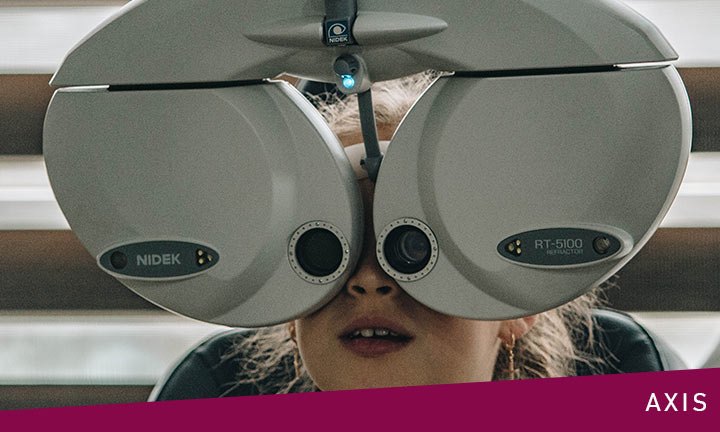
The axis is a crucial measurement for contact lenses that correct astigmatism. The axis specifies the orientation of the cylinder power of your lens. Doctors show this measurement by degrees.
This helps compensate your cornea’s lack of spherical shape, which is normally the case with astigmatism.
ADD or Add Power

The value in the add power section refers to the additional magnifying power found in bifocal contact lenses, which are important for reading and close-up vision.
The add power is measured as diopters and is normally shown with a plus sign before the value in your prescription.
COLOR
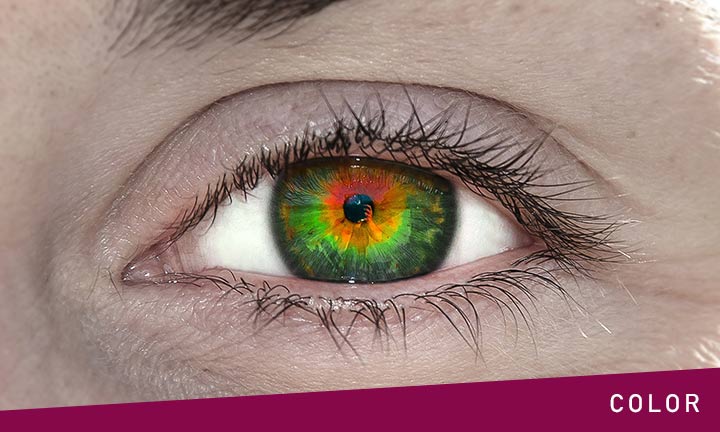
You can find a color section in your prescription if your contact lenses are designed to alter or enhance your eye color.
Sometimes, you’ll find descriptions like “cat-eye” if you have special-effects lenses, which indicates the design of your contacts.
The color name and style description may vary depending on the brand of contact lenses that you get.
BRAND

If you live in the US, you might have noticed that your contact lens prescription always indicates the brand of your lenses.
This is because contact lens retailers are obligated by law to inform you of that brand only.
However, some private-label contact lenses that are specifically sold by eye care professionals, a substitute of a national brand is allowed.
More Crucial Uses for Contact Lens Prescription
Now that you can understand your contact lens prescription, let’s talk about the more crucial role that these details play.
The prescription that eye doctors write aren’t only important for your basic contact lenses, they also specify extremely important details that are used for specialized lenses.
Some people have eye conditions that require more care and treatment, and the details in the prescription can help them get the right contact lenses for their eyes.
A good example of these types of lenses are scleral contact lenses. Scleral lenses are large contact lenses that lay on your sclera to create a tear-filled pit for your cornea.
This type of lens is used to treat certain eye conditions that do not respond to other types of treatments.
A study by the Illinois College of Optometry about scleral prescription and management practices concluded that a reasonable standard for the prescription and management of scleral lens do exist.
However, there is still a need to improve the details and standards of specialized contact lens prescriptions like the average diameter of the lens, the amount of usage per day, and the application of non-preserved products on lenses.
Prescribed Care for Contact Lenses
Now that you have a better idea about the details of your prescription, let’s talk about taking care of your contact lenses. Did you know, that as a contact lens user, you’re at risk of eye infections?
Complications with contact lenses arise if you don’t properly wear, clean, disinfect, and store your contact lenses as prescribed by eye providers.
According to a study by the Division of Foodborne, Waterborne, and Environmental Diseases, National Center for Emerging and Zoonotic Infectious Diseases, CDC, around 1 out of six adults wear contact lenses, and a third of them have had their eyes checked due to redness and eye pain from wearing contacts.
Additionally, around 99% of contact lens users have shown bad habits that could lead to eye infections and inflammation.
An estimated one in six adults in the United States wears contact lenses, and one third of them report at least one health care visit for a red or painful eye while wearing lenses.
Approximately 99% of contact lens wearers reported at least one risk behavior ever for eye infections or inflammation.
So, now that you understand your contact lens prescription, you should also learn the right way to take care of your lenses. Stay safe and enjoy your vision!
Infographics:

Share this Image On Your Site
References:
Scleral Lens Prescription and Management Practices: The SCOPE Study
https://www.ncbi.nlm.nih.gov/pubmed/28394876
Contact Lens Wearer Demographics and Risk Behaviors for Contact Lens-Related Eye Infections — United States, 2014
https://www.ncbi.nlm.nih.gov/pmc/articles/PMC5779588/
Understanding Your Contact Lens Prescription

Leave a Reply
You must be logged in to post a comment.